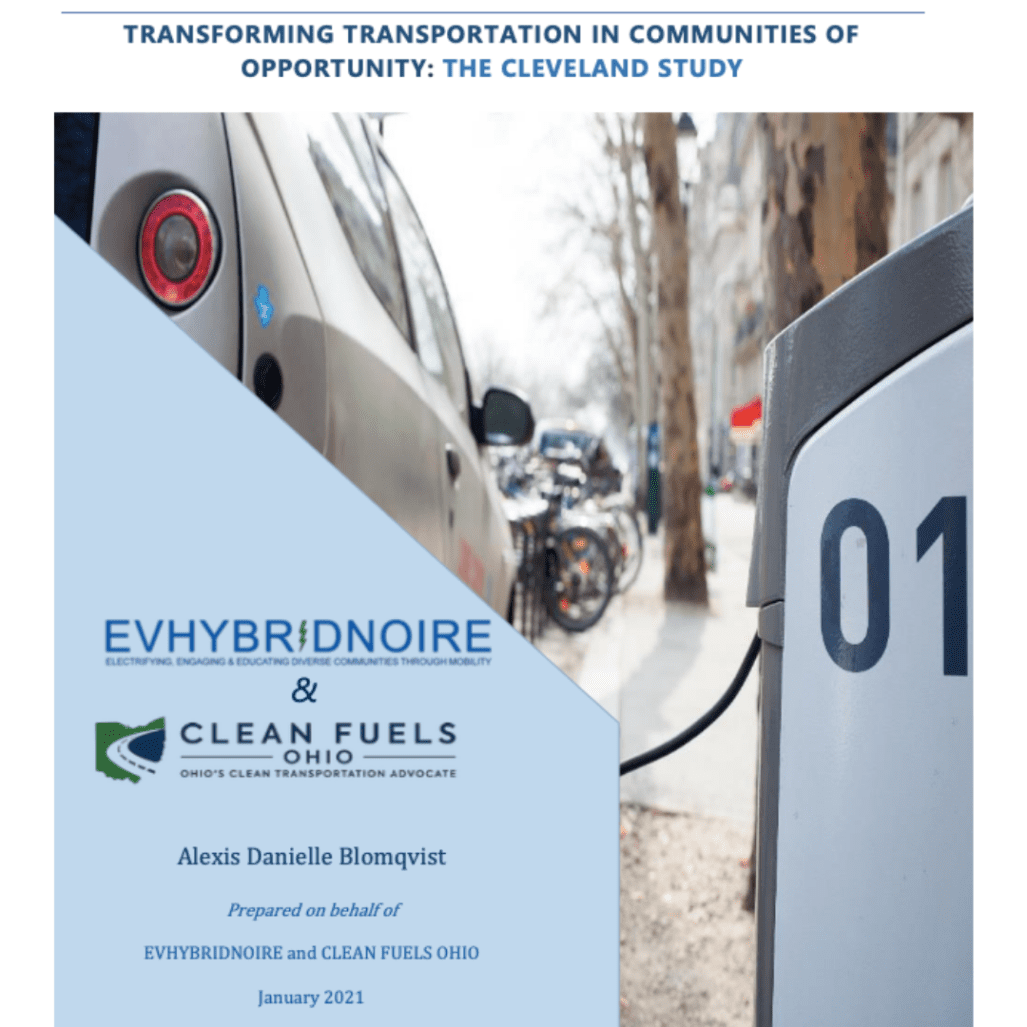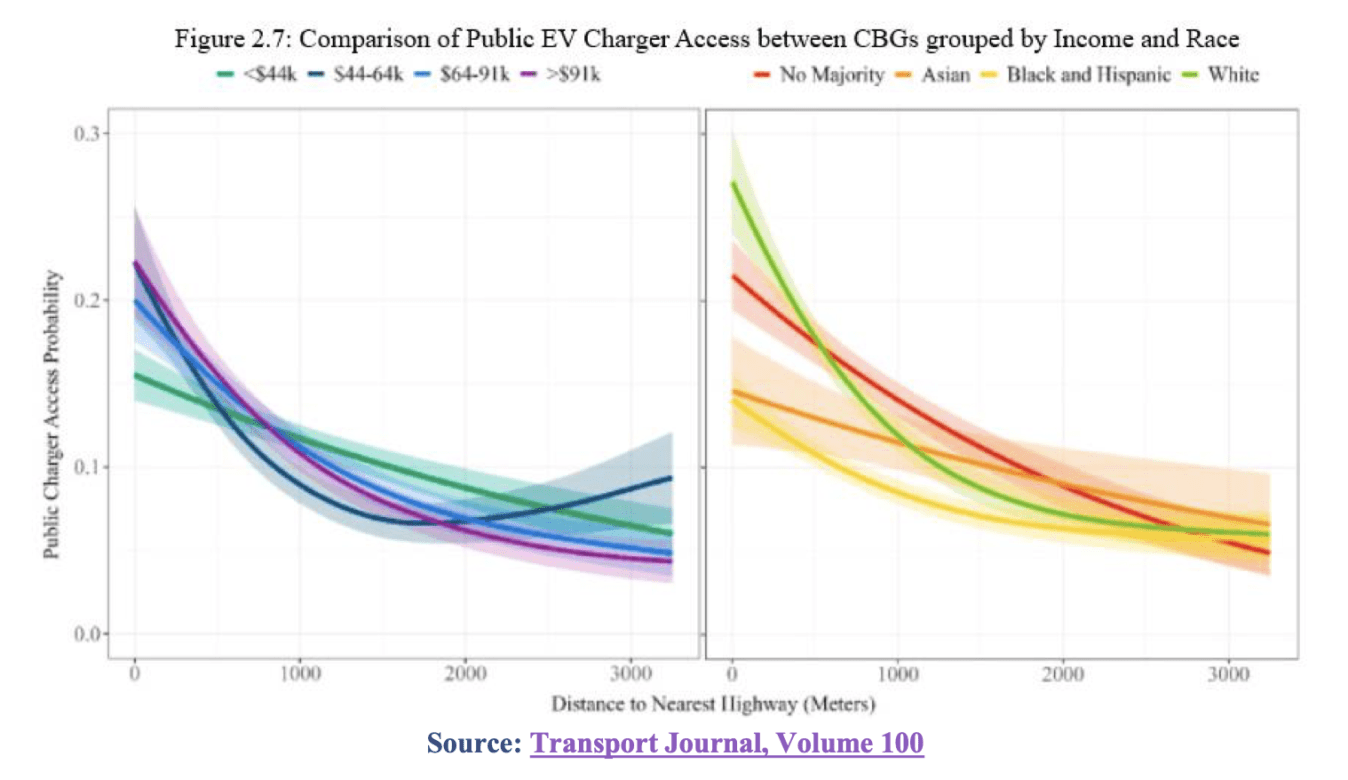This week we’re helping to get the word out about the brand new Cleveland Study released by EVHybridNoire and Clean Fuels Ohio.
Both of these organizations are doing great work to advance adoption of electric vehicles.
EVHybridNoire is “the world’s largest network of diverse electric vehicle owners and enthusiasts” and advocates for e-mobility solutions in underserved communities. Clean Fuels Ohio is “a national Clean Cities Coalition that supports energy and economic security through partnerships that advance affordable, efficient, and environmentally beneficial domestic transportation fuels, technologies, and mobility systems.”
The Cleveland Study takes a look at disparities in EV access and adoption across demographics, with a focus on Black and low- or moderate-income communities in the Cleveland area. This is a really interesting read at the intersection of equity and clean transportation, informed by a number of interviews, focus groups, and surveys, as well as previous research by other parties. You can read the report at: http://bit.ly/ClevelandStudy.
The report details the attitudes, beliefs, and knowledge of next generation mobility in the Greater Cleveland area to identify unmet transportation needs in target communities. The data on experiences with clean transportation will enable governmental agencies, advocacy organizations and utilities to begin to understand and plan to meet the needs of low-income and Black communities, who have thus far been largely excluded – on an institutional level – from outreach, education, and policy efforts.
Key areas covered include:
- In-depth comparison of EV perception and consumer experience across demographics on a national and statewide level.
- Illuminating what inequity in electrification means for the EV market as a whole, what it means for low-income and Black communities, and how a deeper understanding of this knowledge can be used to move forward with advocacy efforts in these communities.
Post Purpose:
Spread the word about the new Cleveland Study from EVHybridNoire and Clean Fuels Ohio, and draw attention to the importance of an equitable transition to clean transportation.
Executive Summary
Currently, higher income, predominantly white communities are experiencing EV adoption at disproportionately higher rates than their Black and low-income counterparts. This means that those communities are disproportionately reaping the localized benefits of EV adoption. To ensure equity in the distribution of the benefits of transportation electrification, it is crucial to understand the impacts of environmental racism, to explore and promote electric vehicle adoption, and to develop models for transportation electrification in low- income urban communities. Included in these efforts is advocacy for polices at both local and state level that are designed to move toward equitable outcomes for all. It is clear that widespread adoption of electric vehicles provides significant benefits to both owners and communities alike, including improved health outcomes, financial benefits (such as lower maintenance costs for owners and downward pressure on rates for all electricity ratepayers regardless of vehicle type), and community-wide economic benefits derived from reducing the exportation of energy revenue. It should therefore be a key priority for all stakeholders in this industry to ensure that these benefits are shared by all.
In pursuit of this goal, EVHybridNoire and Clean Fuels Ohio developed a joint report detailing the attitudes, beliefs, and knowledge of next generation mobility in the Greater Cleveland area to identify unmet transportation needs in target communities. By gathering data on these participants’ experiences with clean transportation, governmental agencies, advocacy organizations and utilities can begin to understand and plan to meet the needs of low income and Black communities, who have thus far been largely excluded – on an institutional level – from outreach, education and policy efforts.
Audiences of all sorts can benefit from the dissemination of this work, but there is specific and actionable content for governmental agencies and utilities, who are uniquely situated to impact the distribution of developments in electrification efforts.
CONCLUSION
The Cleveland Study and subsequent literature review embedded in the report serve to illustrate two important (but contradictory) points: firstly, the perception of EVs in communities of opportunity is not vastly different than that of the general population. On the other hand, there are further considerations that intersect with communities of opportunity and their access to electric vehicles, and these considerations can diverge greatly from the general population. Teasing apart the distinction is an important first step towards understanding electrification in these communities and is an essential aspect of building strategies for bringing electric vehicles to these communities.
This report serves to also illustrate that communities of opportunity and Black communities are prepared for electrification and, in many ways, more supportive of the technology than the average consumer. The perception of EV drivers as monolithic and single dimensional is not for lack of want, but rather for lack of access. Improving access to clean technology – and ensuring that the benefits uplift these communities – is a fundamental part of any electrification plan that aims to disseminate clean transportation solutions for all. The Cleveland Study is but one of many further studies that need to take place on larger scales to fully understand the specific challenges in these communities and their unique community needs. Expanding on the work of the Cleveland Study will be critical in developing a body of literature that informs policy decisions and advocacy efforts for communities that traditionally have been left out of clean transportation discourse.
Moving forward, it is the hope of the project partners that the policy recommendations listed above are formulated into electrification plans on a local, state, and national level. By addressing the experiences and perceptions in communities of opportunity, there is a greater likelihood that subsequent policy developments will be more in line with the realities and requirements in these communities.


